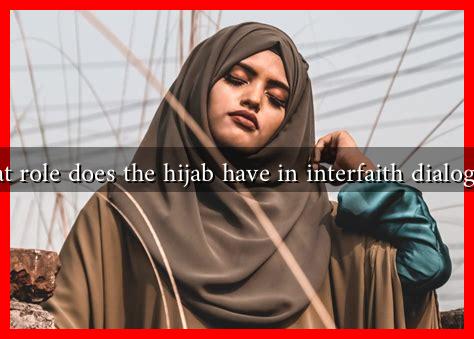-
Table of Contents
What Role Does the Hijab Have in Interfaith Dialogues?
The hijab, a traditional headscarf worn by many Muslim women, has become a symbol of faith, identity, and cultural heritage. However, its role extends beyond personal expression; it plays a significant part in interfaith dialogues. This article explores how the hijab can foster understanding, challenge stereotypes, and promote respect among different faith communities.
The Hijab as a Symbol of Identity
For many Muslim women, the hijab is not merely a piece of clothing but a profound expression of their identity and beliefs. It represents a commitment to their faith and serves as a reminder of their values. In interfaith dialogues, the hijab can act as a bridge between cultures, allowing individuals to share their personal stories and experiences.
- Personal Narratives: Women who wear the hijab often share their reasons for doing so, which can include religious obligations, cultural traditions, or personal choice. These narratives can humanize the experience of wearing a hijab and dispel misconceptions.
- Visibility: The hijab makes Muslim women visible in predominantly non-Muslim societies, prompting discussions about diversity and inclusion.
Challenging Stereotypes and Misconceptions
The hijab is often subject to stereotypes, with some viewing it as a symbol of oppression. However, interfaith dialogues provide a platform to challenge these misconceptions. By engaging in conversations about the hijab, participants can explore the complexities of choice, autonomy, and cultural significance.
- Empowerment vs. Oppression: Many women assert that wearing the hijab is an empowering choice that allows them to express their faith freely. Sharing these perspectives can help dismantle the narrative that equates the hijab with subjugation.
- Education: Interfaith dialogues can serve as educational opportunities, where participants learn about the diverse meanings of the hijab across different cultures and contexts.
Promoting Respect and Understanding
Interfaith dialogues that include discussions about the hijab can foster mutual respect and understanding among different faith communities. When individuals engage in open conversations about their beliefs and practices, they can find common ground and appreciate each other’s differences.
- Building Relationships: Sharing experiences related to the hijab can help build relationships between individuals of different faiths, creating a sense of community and solidarity.
- Encouraging Empathy: Understanding the significance of the hijab can encourage empathy among participants, leading to more respectful interactions and reducing prejudice.
Case Studies and Examples
Several initiatives and case studies illustrate the positive impact of discussing the hijab in interfaith dialogues:
- The Hijab Project: This initiative encourages Muslim women to share their stories about wearing the hijab, fostering understanding and respect among diverse communities. The project has successfully engaged participants from various faith backgrounds, leading to meaningful conversations.
- Interfaith Panels: Many universities and community organizations host interfaith panels where women from different religious backgrounds discuss their experiences with religious attire, including the hijab. These events often lead to increased awareness and reduced stereotypes.
Statistics on Interfaith Engagement
Research indicates that interfaith dialogues can significantly impact community relations. According to a study by the Pew Research Center, 68% of Americans believe that interfaith dialogue is essential for promoting understanding among different religious groups. Furthermore, 75% of participants in interfaith programs reported feeling more positive about other faiths after engaging in dialogue.
Conclusion
The hijab plays a multifaceted role in interfaith dialogues, serving as a symbol of identity, a tool for challenging stereotypes, and a means of promoting respect and understanding. By engaging in open conversations about the hijab, individuals can foster empathy and build relationships across faith communities. As society becomes increasingly diverse, the importance of such dialogues cannot be overstated. Embracing the hijab as a topic of discussion can lead to greater awareness, acceptance, and ultimately, a more harmonious coexistence among different cultures and religions.
For further reading on the significance of the hijab in various contexts, you can explore resources from organizations like the Islamic Society of North America and the Pew Research Center.




